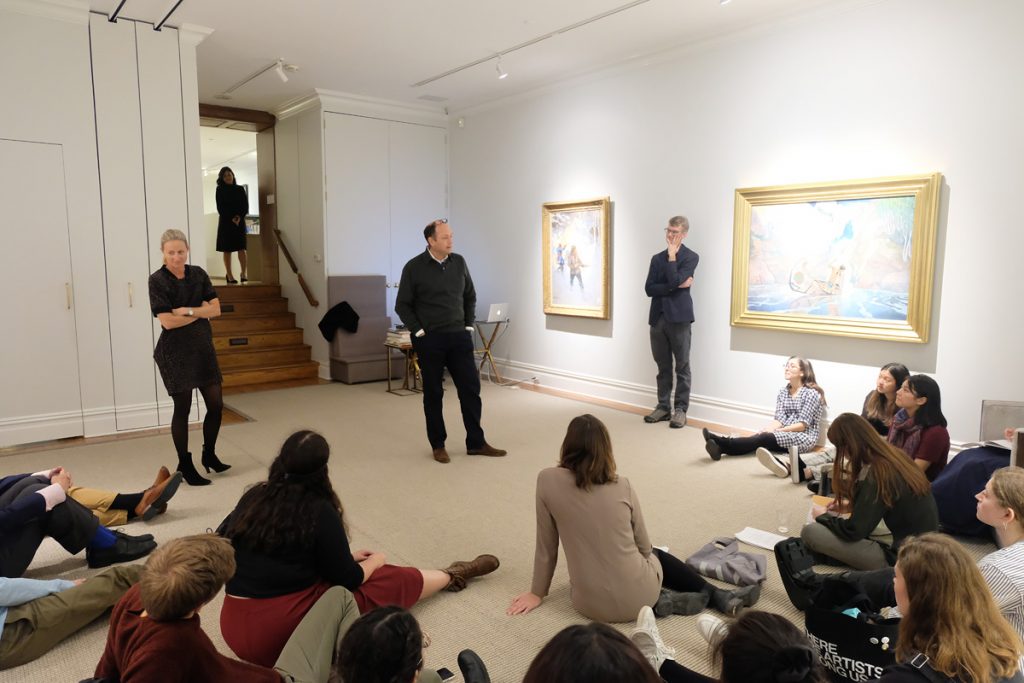Andy Schoelkopf, Director, Menconi & Schoelkopf Fine Art
By Kathryn Kearney ’21
The New York City trip from start to finish was an experience that helped me to better understand the operations of the art world, where auction houses stand with art galleries, how museums function, and the great joy that people find in collecting art. I had the opportunity to interview Andy Schoelkopf who familiarized himself with the questions that Adriana and I wrote beforehand, which was evident in the way that he seamlessly transitioned from point to point about his personal history with the art world. Andy chronicled his timeline by starting the discussion with an anecdote about his father owning a gallery to working at Christie’s to founding his own gallery, and all of the in-between which painted a storyline that felt encouraging and inviting to my classmates and I as we begin to consider pursuing careers in the art industry.

Andy’s gallery, Menconi & Schoelkopf Fine Art is centered around American Art from 1776 to 1976 and his mission is to bring attention to the stories that artists from these years yearned to tell through their art. Andy took after his father’s approach to being an art dealer in which art business was treated in a non-commercial fashion. After his father passed, Andy began working as a cataloger at Christie’s then worked his way up to become the Vice President of American Art and assisted the operating management team with their pursuits. It was interesting to hear that he later worked for an internet startup that assisted e-commerce businesses such as eBay which became the new, all encompassing auction house.
When it came time for Andy to start his own gallery, he created a strategic, marketable approach through programming and events to sell art over time to people rather than doing it all at once which would ultimately disrupt the market and leave him no room to form long-term relationships with his clients. Andy emphasized that if we were interested in art and business, finance and analysis, and the educational side of art, the profession of an art dealer is one that synergizes all interests. As an art dealer, one has the opportunity to curate experiences and “help people make informed decisions about why art is valuable and special.”
The understanding and ability to grade objects in order to sell them effectively was a tactic that I never would have thought about until Andy discussed it in the context of showing different works under an artist’s estate. He made the case that if you fully inform people of the work’s history, context and its distinguishing features, clients are almost immediately drawn to act on this potential purchase. Andy used a jelly and jam analogy when describing his sales process by showing clients different works they may be interested in buying. He made the case that one is more likely to purchase a jam by testing two or three rather than twenty three, thereby the workers at gallery have the opportunity to pull a few works instead of many and hone in on the reasons as to why the buyer should look to purchase a specific work.
Andy’s proactive approach to the selling of art is also imbued in his decision making when it comes to acquiring works for the gallery. He stressed that the authenticity and history of the works need to be known so that when it comes time to sell, he can fully embrace customer values and highlight the significant details of the works when it comes time to decide what they may want from his gallery. The lessons embedded in our conversation with Andy were telling of his genuine desire to sell people works of art that add true value to their collection, passion for American art and educational purposes it serves, and how important it is to be transparent in the exchange of art.